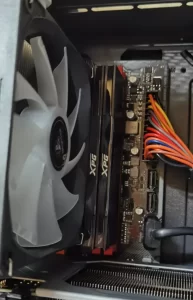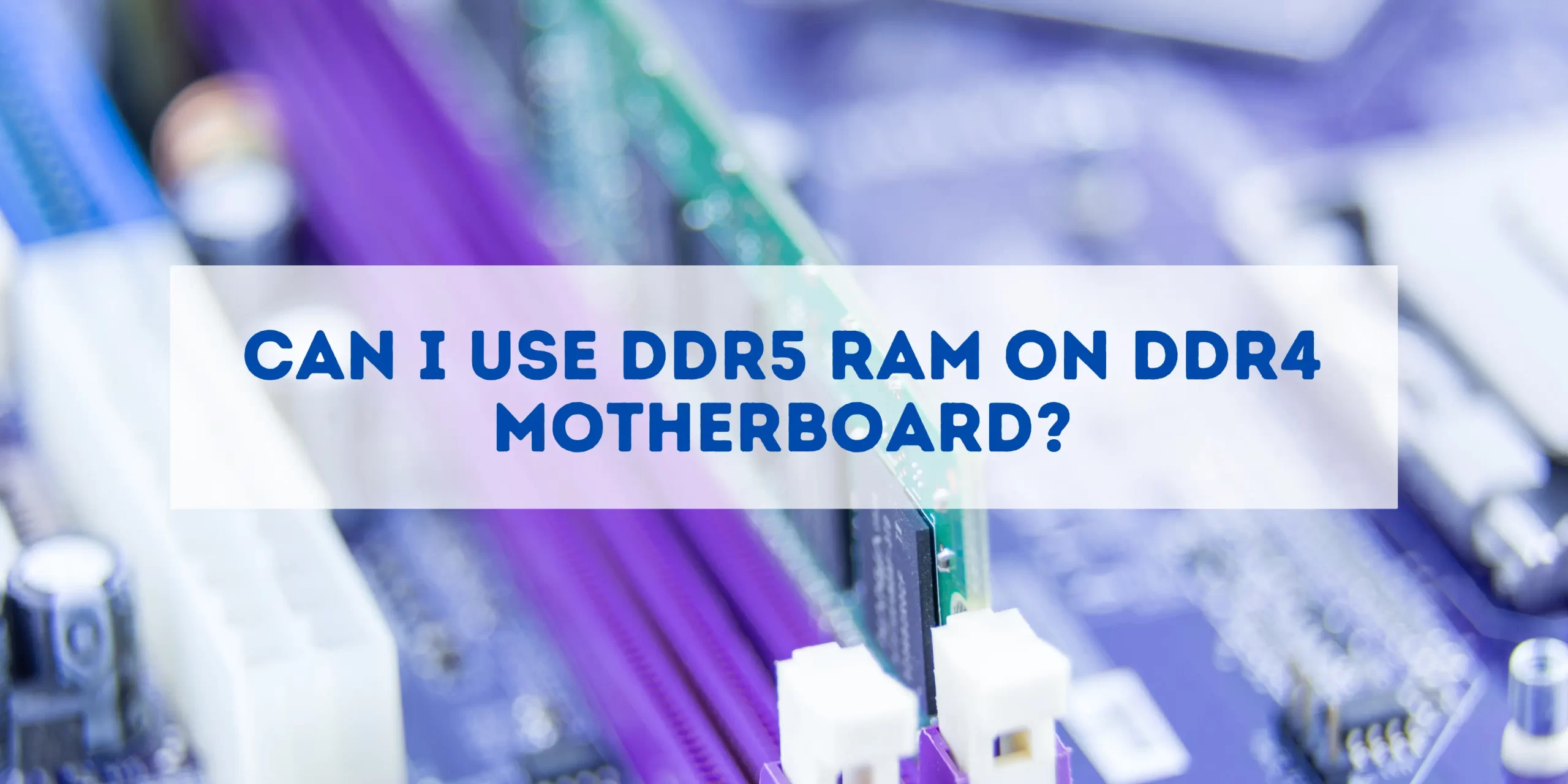DDR 5 RAM has been with us since 2021. If you need the extra speed of DDR 5 RAM but are running a machine designed for DDR 4 RAM, you may wonder if DDR 5 RAM will work on a DDR 4 motherboard.
DDR 5 RAM will not work in the memory slot of a DDR 4 motherboard. The two RAM modules have several key physical and operational differences which make it impossible to put DDR 5 RAM into a DDR 4 slot on a motherboard. Only motherboards with both slot types can take DDR 5 RAM.
Unfortunately, the two are incompatible, and in most cases the motherboard has to be upgraded before DDR 5 RAM can be used. Keep reading to find the key differences between DDR 4 and 5 RAM and why they cannot be interchanged.
DDR 4 Vs. DDR 5 RAM
There are several key differences between DDR 4 RAM and DDR 5 RAM.
- Performance: DDR5 offers higher bandwidth and speed compared to DDR4. It has improved data transfer rates, potentially doubling the performance of DDR4.
- Efficiency: DDR5 is more power-efficient. It operates at a lower voltage (1.1V) compared to DDR4 (1.2V), which reduces overall power consumption.
- Capacity: DDR5 supports larger capacity modules due to advancements in technology, allowing for more memory per DIMM.
- Latency: DDR5 might initially have higher latency compared to DDR4, but this is offset by its higher overall speed and efficiency.
- Physical Differences: The pin layout of DDR5 is different from DDR4, making them physically incompatible with each other’s slots on a motherboard.
- Compatibility: Upgrading to DDR5 requires a motherboard and CPU that support it, as DDR4 and DDR5 are not interchangeable.
This table outlines the difference between them
Difference | DDR 4 RAM | DDR 5 RAM |
Physical Structure | > Pin notch positioned closer to the centre. > 288 pins. > Command and address bus wider. | > Pin notch positioned slightly to the left. > 288 pins. |
Operation Voltage | 1.2V | 1.1V |
Memory Bandwidth | 3.2 gigabits per second per pin | 6.4 gigabits per second per pin |
Power Management | No voltage regulation on the individual stick. Voltage regulation is built into the motherboard. | Voltage regulation built into each RAM stick. |
Can We Install DDR4 and DDR5 RAM Together?

No, you cannot mix DDR4 and DDR5 RAM in the same system. The two types of RAM are physically incompatible due to different pin configurations, and they also operate on different voltages and technologies. Motherboards are designed to support specific types of RAM, so you would need a motherboard with separate slots for each type of RAM to even attempt this—which is exceedingly rare if not nonexistent.
Additionally, even if such a motherboard did exist, the system would likely encounter issues related to timing and data integrity, as the RAM modules would operate at different speeds and use different protocols. Therefore, it’s essential to use the same type of RAM that your motherboard supports for optimal performance and stability.
You may also like: Do You Get Better Performance With 2 Or 4 RAM Sticks?
Why Will DDR 5 RAM Not Fit Into A DDR4 Motherboard?
The different physical structure of the RAM, particularly the placing of the notch between the pins, means that if DDR 5 ram is forced into a DDR 4 slot, it will damage the pins, the base of the RAM module, and possibly the slot it is being forced into. If pushed in hard enough, the damage may be irreparable.
Also, the different operation voltage means that even if you did manage to get a DDR 5 RAM card into a DDR 4 slot, the voltage received will be higher than what the DDR 5 card is designed for and may cause damage.
For the same reasons, this also means DDR 4 RAM will not work on a DDR 5 motherboard. In other words, the different generations of RAM cards will only work on the motherboard they were designed for. They are neither backward nor forwards compatible.
Is there any DDR5 to DDR4 Adapter?
There is no DDR5 to DDR4 adapter. Even if such an adapter existed, it would likely be cost-prohibitive and could introduce latency or other performance issues that would negate any benefits gained from using faster DDR5 memory.
Is DDR5 backward Compatible?
DDR5 RAM is not backwards compatible with DDR4 slots on motherboards. They have different pin configurations, electrical requirements, and operational protocols, making them physically and electrically incompatible with each other.
Motherboards are designed to support specific types of RAM. A motherboard that is designed for DDR4 RAM will not have the appropriate slots to fit DDR5 RAM modules, and vice versa.
Therefore, if you’re considering upgrading to DDR5 RAM, you’ll likely also need to upgrade your motherboard to one that specifically supports DDR5, and potentially other components like the CPU if the new motherboard requires a different socket type.
Should You Upgrade To A DDR 5 RAM Motherboard?
The clear benefits of DDR 5 RAM are the increased bandwidth (3.2 gigabits per second per pin in DDR 4 RAM to 6.4 gigabits per second per pin in DDR 5 RAM) and other generational leaps such as voltage regulation built into each card rather than relying on the motherboard for it.
The downside will be the cost associated with the new modules and the need to upgrade the motherboard and other components to support it.
It is the age-old question of speed, and functionality verse cost, and a needs analysis will help you determine whether to upgrade.
You may also like: Will My Computer Run Properly With 3 Identical RAM Sticks?

